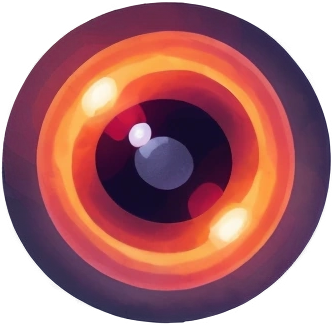With the way current LLMs operate? The short answer is no. Most machine learning models can learn the probability distribution by performing backward propagation, which involves “trickling down” errors from the output node all the way back to the input. More specifically, the computer calculates the derivatives of each layer and uses that to slowly nudge the model towards the correct answer by updating the values in each neural layer. Of course, things like the attention mechanism resemble the way humans pay attention, but the underlying processes are vastly different.
In the brain, things don’t really work like that. Neurons don’t perform backpropagation, and, if I remember correctly, instead build proteins to improve the conductivity along the axons. This allows us to improve connectivity in a neuron the more current passes through it. Similarly, when multiple neurons in a close region fire together, they sort of wire together. New connections between neurons can appear from this process, which neuroscientists refer to as neuroplasticity.
When it comes to the Doom example you’ve given, that approach relies on the fact that you can encode the visual information to signals. It is a reinforcement learning problem where the action space is small, and the reward function is pretty straight forward. When it comes to LLMs, the usual vocabulary size of the more popular models is between 30-60k tokens (these are small parts of a word, for example “#ing” in “writing”). That means, you would need a way to encode the input of each to feed to the biological neural net, and unless you encode it as a phonetic representation of the word, you’re going to need a lot of neurons to mimic the behaviour of the computer-version of LLMs, which is not really feasible. Oh, and let’s not forget that you would need to formalize the output of the network and find a way to measure that! How would we know which neuron produces the output for a specific part of a sentence?
We humans are capable of learning language, mainly due to this skill being encoded in our DNA. It is a very complex problem that requires the interaction between multiple specialized areas: e.g. Broca’s (for speech), Wernicke’s (understanding and producing language), certain bits in the lower temporal cortex that handle categorization of words and other tasks, plus a way to encode memories using the hippocampus. The body generates these areas using the genetic code, which has been iteratively improved over many millennia. If you dive really deep into this subject, you’ll start seeing some scientists that argue that consciousness is not really a thing and that we are a product of our genes and the surrounding environment, that we act in predefined ways.
Therefore, you wouldn’t be able to call a small neuron array conscious. It only elicits a simple chemical process, which appears when you supply enough current for a few neurons to reach the threshold potential of -55 mV. To have things like emotion, body autonomy and many other things that one would think of when talking about consciousness, you would need a lot more components.

















That is good to know. Tried the free version of Roll20 before, and it definitely felt lacking in certain areas. Oh, and thanks for letting me know about the sale! I’ll definitely keep an eye out for that one :)